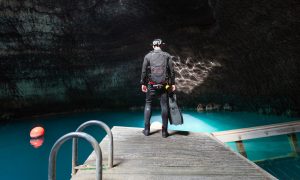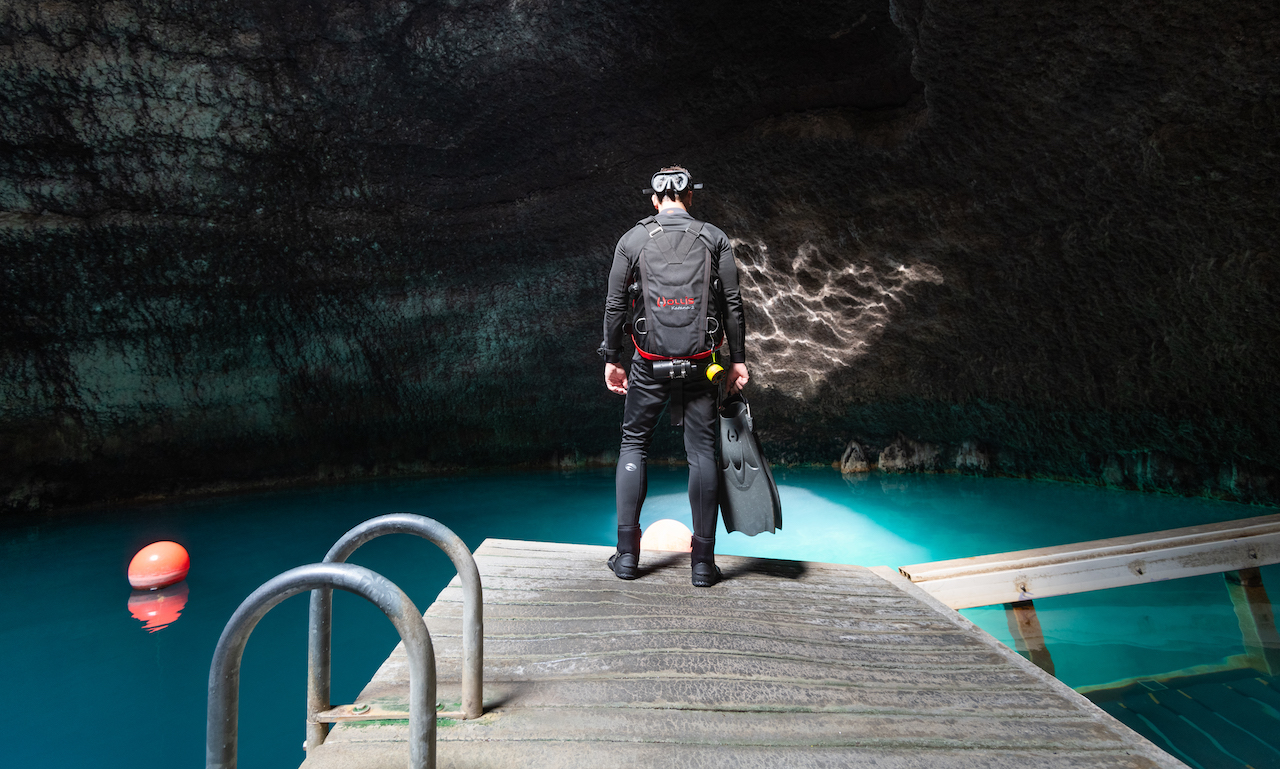 Contrary to popular belief, diving isn’t just a coastal pursuit. Although it’s true that the lion’s share of great diving takes place in the Earth’s seas and oceans, there’s also a plethora of quality dive spots in the heart of America, too. This means that land-locked divers in North America can still pursue their passion for aquatic exploration without having to venture too far afield.
Contrary to popular belief, diving isn’t just a coastal pursuit. Although it’s true that the lion’s share of great diving takes place in the Earth’s seas and oceans, there’s also a plethora of quality dive spots in the heart of America, too. This means that land-locked divers in North America can still pursue their passion for aquatic exploration without having to venture too far afield.
From deep geothermal wonders to enormous wreck graveyards, the United States holds some premier inland dive sites spanning the gamut from beginner level all the way to mastery. While not quite at the level of Mexico’s cenotes to the south, America still boasts a retinue of interesting and unique spots to take the plunge and discover fascinating geology, history and biology—some smack-dab in the middle of flyover country.
A few of the sites below are open, warm and approachable, while others are much more demanding. Regardless of your skill and experience, it’s always necessary to come prepared with info, proper gear and a dive buddy. So if you’re interested in finding a site regionally close to you, find below a roundup of a few of the top inland dive sites in the continental United States.
1) Homestead Crater, Utah
The Homestead Crater is known to many Salt Lake City divers as a great spot to enjoy warm/hot waters, good visibility and a tranquil setting to refine skills and commit to further training. Nestled within a large volcano-shaped limestone crater, the pool itself fluctuates between 90-96 degrees F year round (even when snow is falling straight into the pool midwinter). In fact, Homestead Resort claims its the only hot-water dive site in North America.
Fascinating geology, good facilities and a truly unique diving experience make Homestead Crater an excellent site for those landlocked in the SLC/Park City areas. Day rates range between $22 and $27 and scuba equipment is available for rental in case you’re in from out of town.
2) Thunder Bay, Lake Huron
Popularly known as “Shipwreck Alley,” Thunder Bay is the first of Michigan’s underwater preserves and is unique as the only co-designated National Marine Sanctuary and Underwater Preserve. As the nickname implies, Thunder Bay boasts many, many wrecks, with some figures estimating that over 100 wrecks (and many more undiscovered sites) currently litter the preserve. Ship ages range all the way from the 1850s through to the 1960s.
The most popular wrecks to dive include the Grecian, E.B. Allen, Montana, Pewabic, Monrovia and John J. Audubon. For more information or to book a dive or rental, contact Thunder Bay Scuba.
3) Emerald Bay, Lake Tahoe, California
When most people think of Lake Tahoe, they picture big mountains meeting sublime aquamarine shores, and skiing. But one of the best-kept secrets of the Tahoe Basin is its great dive opportunities. Although good clarity and interesting geology (granite) can be found around the entire shoreline of the lake, Emerald Bay, tucked into the Tahoe’s southwest corner, holds perhaps the best diving in the area.
This is due to the numerous historical artifacts that can be found under Emerald Bay’s surface, including the infamous barge sites at the bay’s southern fringe. In fact, according to the CA.gov website, “Starting October 1, 2018, the public is officially able to experience California’s first maritime heritage underwater trail devoted to showcasing Lake Tahoe’s historic recreational watercraft and barges, that now rest below the surface of Emerald Bay.”
Emerald Bay dive sites are littered with historical garbage patches—now artifacts from a bygone era—so please leave things as you find them so future divers can also enjoy the relics.
4) Smith River, California
Tucked amongst the Redwoods near the border between Southern Oregon and Northern California, the Smith River is legendary for its crystal clarity and fantastic diving conditions. A free-flowing river, the Smith is undammed and tracks most of its course through rugged rock canyons—part of the reason it boasts average visibilities topping 50 feet. Conditions and temps can vary: in winter, the Smith averages about 40ish degrees F, but in the summer it can climb into the low 70s.
Due to its good vis and rocky bottom (no silt), the Smith River is a popular site for training. The most popular site is known as Early Hole and is located roughly 11 miles northeast of Crescent City, California. Another reason to go? The fish. The Smith boasts fall-run Chinook salmon, coho salmon, winter-run steelhead trout and coastal cutthroat trout. Other species include white sturgeon and green sturgeon, American Shad, and many others.
5) Ginnie Springs, Florida
When world-famous dive pioneer Jacques Cousteau visited Florida’s Ginnie Springs, his lasting remark was, “Visibility forever.” A locals favorite and also a top destination for spring divers worldwide, Ginnie Springs is a luke-warm 72 degrees F year round.
Top diving sites at Ginnie Springs include the Santa Fe River, which at certain times of year offers decent visibility and drift diving. For a reasonably safe intro to cavern diving, check out the Ginnie Ballroom, which includes a large amphitheatre-like cave; divers are welcome to bring lights along to enjoy everything there is to see.
For a more elite experience, experienced divers can turn to the Devil’s Spring system, which includes three separate areas. Incredible visibility and immaculate limestone geology make the Devil’s Spring sites a top bucket list item.
6) Blue Hole, New Mexico
Offering an astounding 100-foot visibility on average and drawing divers from all over the country, New Mexico’s Blue Hole is an aquatic marvel with a storied past. Pioneers sought out the blue hole for its sublime oasis-like properties during westward expansion. In the 20th century it was used as a fishery, then public swimming area, then finally it gained in popularity with landlocked divers.
Permits to dive are $20. Open Water, Advanced Open Water, Rescue, Dive Master and Diving Instructor Training can be completed at Blue Hole. Temps year round are a cool 62 degrees F, and a 7mm neoprene suit is highly recommended.






 Canada
Canada Other countries
Other countries

